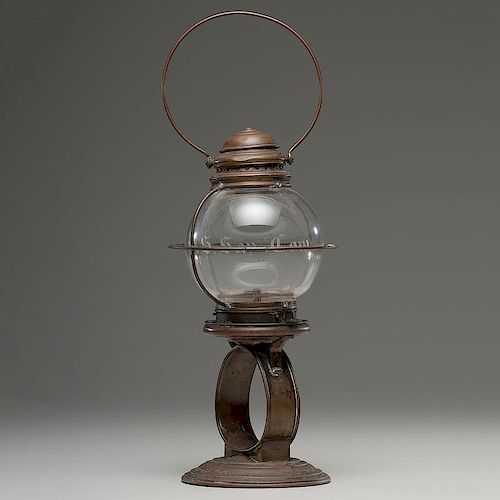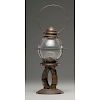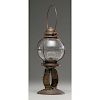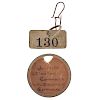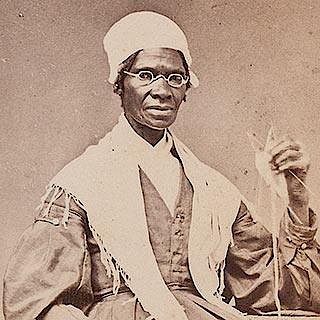U.S. Sanitary Commission Medical Lamp used in the Battle of Gettysburg
About Seller
6270 Este Ave.
Cincinnati , OH 45232
United States
With offices in Cincinnati, Cleveland and Denver, Cowan’s holds over 40 auctions each year, with annual sales exceeding $16M. We reach buyers around the globe, and take pride in our reputation for integrity, customer service and great results. A full-service house, Cowan’s Auctions specializes in Am...Read more
Two ways to bid:
- Leave a max absentee bid and the platform will bid on your behalf up to your maximum bid during the live auction.
- Bid live during the auction and your bids will be submitted real-time to the auctioneer.
Bid Increments
| Price | Bid Increment |
|---|---|
| $0 | $25 |
| $500 | $50 |
| $1,000 | $100 |
| $2,000 | $250 |
| $5,000 | $500 |
| $10,000 | $1,000 |
| $20,000 | $2,500 |
| $50,000 | $5,000 |
| $100,000 | $10,000 |
About Auction
Jun 9, 2017 - Jun 10, 2017
Cowan's Auctions dawnie@cowans.com
- Lot Description
Lantern patented by Philos Blake (No. 8650, January 13, 1852). Approx. 13.5 in. tall, globe ca. 5.5 in. dia. with U.S. San. Com. (United States Sanitary Commission) etched on it. An old tag accompanying the lantern reads: Used by the U.S. Sanitary Commission in the Battlefield of Gettysburg. A second brass tag is numbered 130. According to notes accompanying the lantern, these were removed to protect the globe in recent years.
According to Blake's patent description, this lamp had an oval cuff on the stand so the forearm could be inserted into it, and a weight in the bottom to keep it upright. "My improved lantern is designed chiefly for the use of railroad conductors, freight agents and others who while carrying a lantern have occasion to use both hands in performing manipulations which require light to be above their hands. Lanterns have heretofore been provided with a large ring at their top, by means of which they may be suspended from the arm. In this way the hands are at liberty, but the light is too low down to aid their manipulations."
The United States Sanitary Commission was an extra-governmental relief agency created by Federal legislation in June 1861. It is sometimes seen as a fore-runner of the Red Cross.
Ben Lossing credits the formation of the USSC to the women. "It was the product of divine seed, that took root in the hear of a woman, and by her it was chiefly nourished...On the day when the president called for seventy-five thousand men to suppress the Slave-holders' insurrection, women of Bridgeport, Connecticut, organized a society for the purpose of affording relief and comfort to the volunteers.. In Charlestown, Massachusetts, on the same day, a woman took steps for the formation of a society for the same purpose, and a few days later, the women of Lowell did the same....These were the first outcroppings of the tenderest feelings of women, everywhere, when the men were summoned to the field."
In June 1861, Henry Bellows was named President of the USSC, and Frederick Law Olmsted its executive secretary. They were set up in an office in the Treasury Building in Washington, DC. The Sanitary commission performed functions supplemental to those of the Federal government. By the end of the war, they were raising millions of dollars, much of it at Sanitary Fairs. They also provided nurses, hospitals, special hospital trains, cooks, and filled many other requests - dominoes, checkerboards, cradles for protecting wounded limbs, writing tables - whatever would help the men in their recovery.
As the war progressed, many other organizations found ways to help, inspired by the USSC. After the Battle of Shiloh, David Tod, Governor of Ohio, sent three hospital ships, staffed with nurses, doctors, and supplies, down the rivers to the battlefield. By the end of the war, the fleet numbered almost a dozen floating hospitals.
Accompanied by histories and information about the lantern.
Lossing, Ben. Pictorial History of the Civil War. 1866.
- Shipping Info
-
SHIPPING. At the request of the buyer, Cowan's will authorize the shipment of purchased items. Shipments usually occur within two weeks after payment has been received. Shipment is generally made via UPS Ground service. Unless buyer gives special instructions, the shipping method shall be at the sole discretion of Cowan's Auctions, Inc.. Cowan's is in no way responsible for the acts or omissions of independent handlers, packers or shippers of purchased items or for any loss, damage or delay from the packing or shipping of any property.
-
- Buyer's Premium



 EUR
EUR CAD
CAD AUD
AUD GBP
GBP MXN
MXN HKD
HKD CNY
CNY MYR
MYR SEK
SEK SGD
SGD CHF
CHF THB
THB